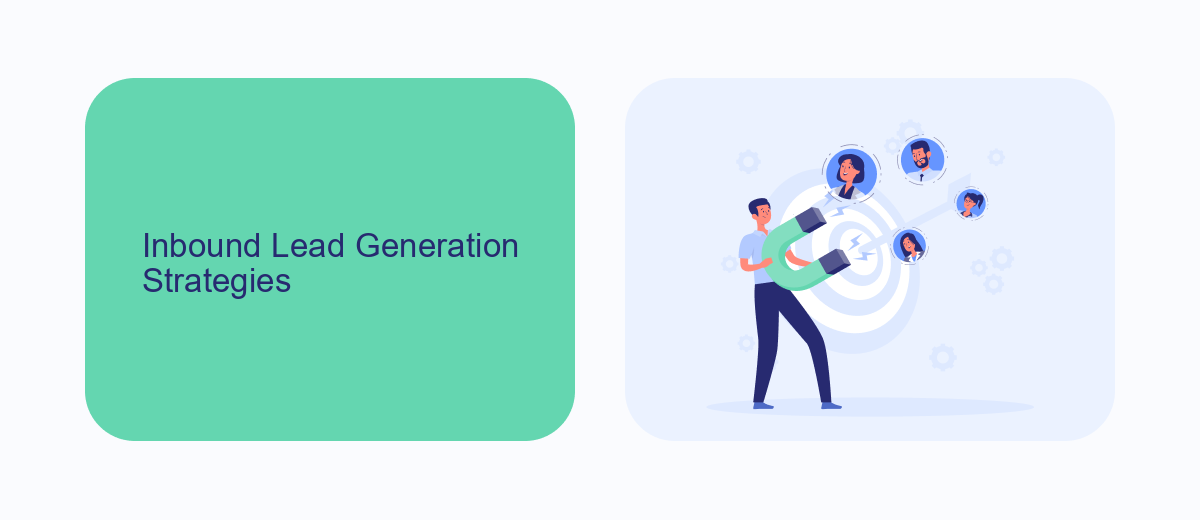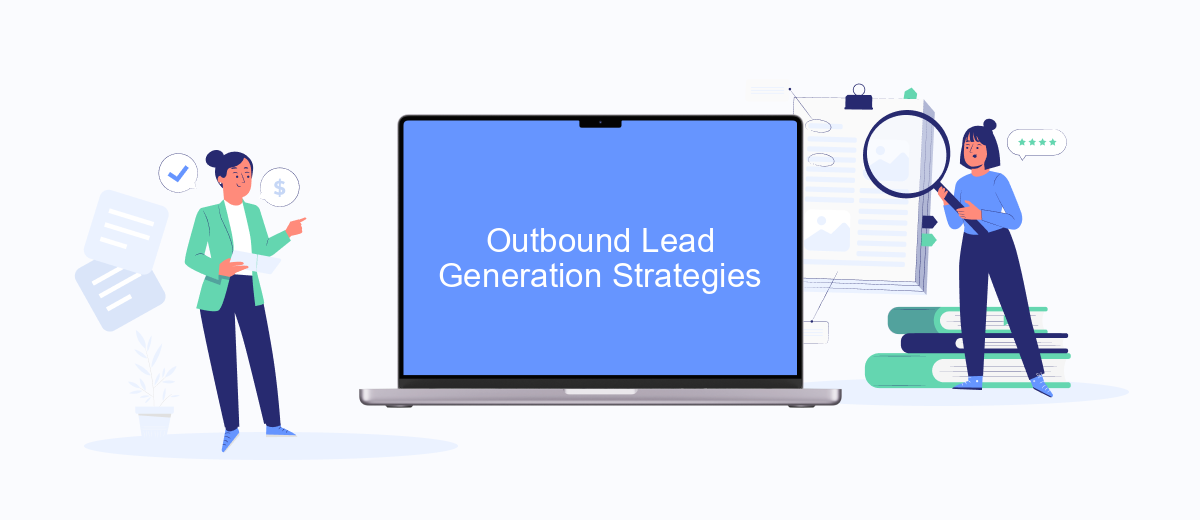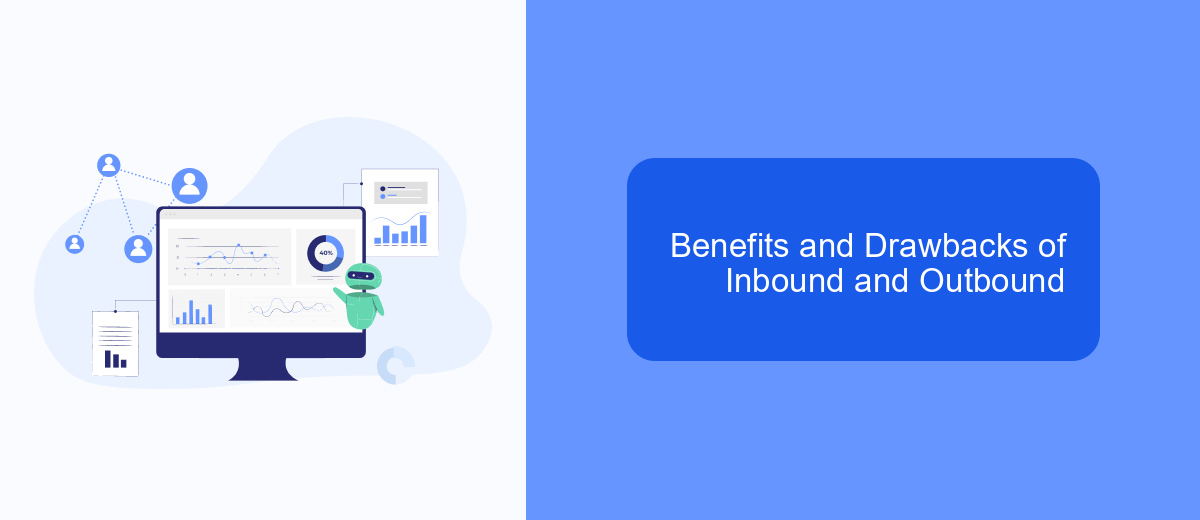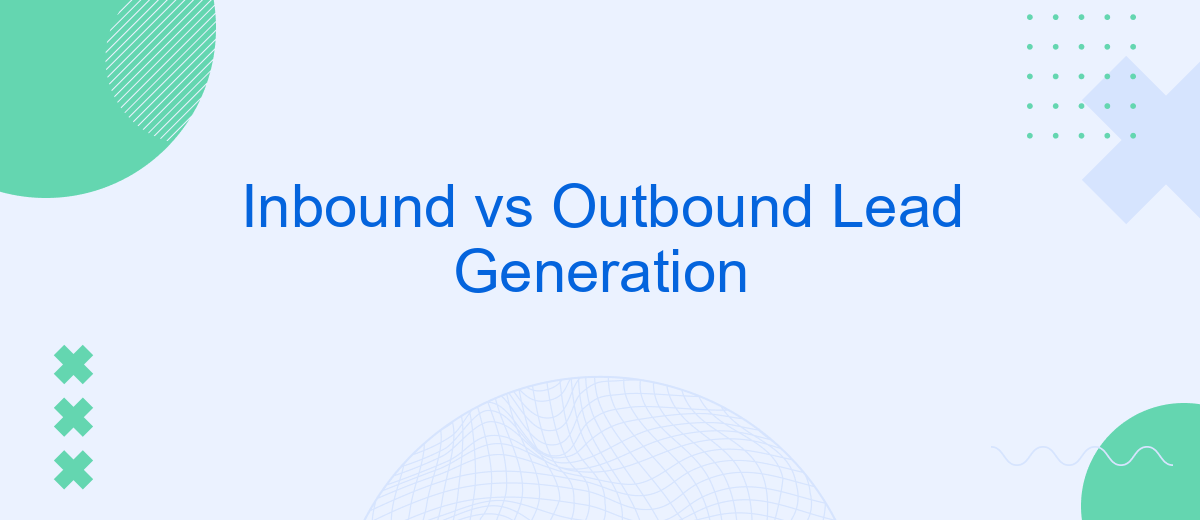In the competitive landscape of modern business, lead generation is crucial for growth and sustainability. Companies often grapple with the choice between inbound and outbound strategies to attract potential customers. Inbound lead generation focuses on drawing customers in through valuable content and engagement, while outbound lead generation involves proactive outreach to prospects. Understanding the strengths and weaknesses of each approach is key to optimizing your marketing efforts.
Introduction: Inbound vs Outbound Lead Generation
In the world of lead generation, businesses often grapple with the choice between inbound and outbound strategies. Inbound lead generation focuses on attracting potential customers through valuable content and experiences tailored to them. Conversely, outbound lead generation involves proactively reaching out to potential leads through methods like cold calling, email campaigns, and advertising.
- Inbound Lead Generation: Content marketing, SEO, social media, and webinars.
- Outbound Lead Generation: Cold calling, direct mail, email marketing, and paid advertising.
Choosing the right strategy depends on your business goals, target audience, and resources. Integrating both approaches can often yield the best results. Tools like SaveMyLeads can streamline the process by automating lead generation and nurturing activities, ensuring a seamless flow of leads from multiple sources. This integration allows businesses to focus on converting leads into loyal customers, ultimately driving growth and success.
Inbound Lead Generation Strategies

Inbound lead generation focuses on attracting potential customers through valuable content and interactions that are relevant and helpful. One effective strategy is content marketing, which involves creating and sharing blog posts, videos, infographics, and eBooks that address the needs and pain points of your target audience. By providing useful information, you build trust and establish your brand as an authority in your industry, encouraging prospects to engage with your business.
Another crucial strategy is leveraging social media platforms to distribute content and interact with your audience. Engaging with followers through comments, shares, and direct messages can foster relationships and drive traffic to your website. Additionally, integrating automated lead generation tools like SaveMyLeads can streamline the process by capturing and managing leads from various sources, ensuring that no potential customer is overlooked. By combining these strategies, businesses can create a robust inbound lead generation system that effectively attracts and converts high-quality leads.
Outbound Lead Generation Strategies

Outbound lead generation involves proactively reaching out to potential customers through various channels to spark their interest in your products or services. This strategy can be highly effective when executed correctly, targeting the right audience with the right message.
- Cold Calling: Directly contacting potential leads via phone to introduce your offerings and gauge their interest.
- Email Marketing: Sending personalized emails to a curated list of prospects to inform them about your services and initiate a conversation.
- Social Media Outreach: Engaging with potential leads on platforms like LinkedIn, Twitter, or Facebook to build relationships and promote your business.
- Networking Events: Attending industry conferences, trade shows, and networking events to meet potential leads in person.
- Integration Tools: Utilizing tools like SaveMyLeads to automate the process of capturing and managing leads from various sources, ensuring no opportunity is missed.
By combining these strategies, businesses can effectively reach out to a broader audience and generate high-quality leads. It's essential to continuously analyze and refine your approach to maximize the effectiveness of your outbound lead generation efforts.
Benefits and Drawbacks of Inbound and Outbound

Inbound lead generation focuses on attracting potential customers through content marketing, SEO, and social media. This method is often less intrusive and aims to provide value, thereby building trust and long-term relationships. Outbound lead generation, on the other hand, involves reaching out to potential customers through methods like cold calling, email campaigns, and direct mail. This approach can be more immediate but is often seen as interruptive.
Both methods have their own set of benefits and drawbacks. Inbound marketing can be cost-effective and build a loyal customer base, but it often requires a longer time to see results. Outbound marketing can yield quicker results but can be expensive and may face resistance from prospects.
- Inbound Benefits: Cost-effective, builds trust, long-term relationships.
- Inbound Drawbacks: Takes time to see results, requires consistent content creation.
- Outbound Benefits: Immediate results, direct approach.
- Outbound Drawbacks: Can be expensive, often seen as intrusive.
Integrating both strategies can be highly effective. Tools like SaveMyLeads can help automate and streamline the process, ensuring that both inbound and outbound efforts are well-coordinated. This balanced approach can maximize lead generation and conversion rates.
Best Practices for Lead Generation
To maximize the effectiveness of your lead generation efforts, it's crucial to implement a multi-channel approach. Utilize a mix of inbound and outbound strategies to capture leads from various sources. Inbound methods, such as content marketing and SEO, attract potential customers organically, while outbound tactics like cold emailing and targeted advertising proactively reach out to prospects. Balancing these approaches ensures a steady flow of leads and broadens your reach.
Integrating your lead generation tools can significantly streamline your processes and improve efficiency. Services like SaveMyLeads can automate the transfer of leads from different platforms to your CRM, ensuring no potential customer falls through the cracks. Additionally, regularly analyze your lead generation metrics to identify what's working and what needs improvement. By continuously refining your strategies and leveraging automation tools, you can enhance your lead generation efforts and drive better results.
FAQ
What is the main difference between inbound and outbound lead generation?
Which method is more cost-effective: inbound or outbound lead generation?
How can I measure the success of my inbound lead generation efforts?
What are the best practices for outbound lead generation?
How can automation tools help in lead generation?
You probably know that the speed of leads processing directly affects the conversion and customer loyalty. Do you want to receive real-time information about new orders from Facebook and Instagram in order to respond to them as quickly as possible? Use the SaveMyLeads online connector. Link your Facebook advertising account to the messenger so that employees receive notifications about new leads. Create an integration with the SMS service so that a welcome message is sent to each new customer. Adding leads to a CRM system, contacts to mailing lists, tasks to project management programs – all this and much more can be automated using SaveMyLeads. Set up integrations, get rid of routine operations and focus on the really important tasks.
